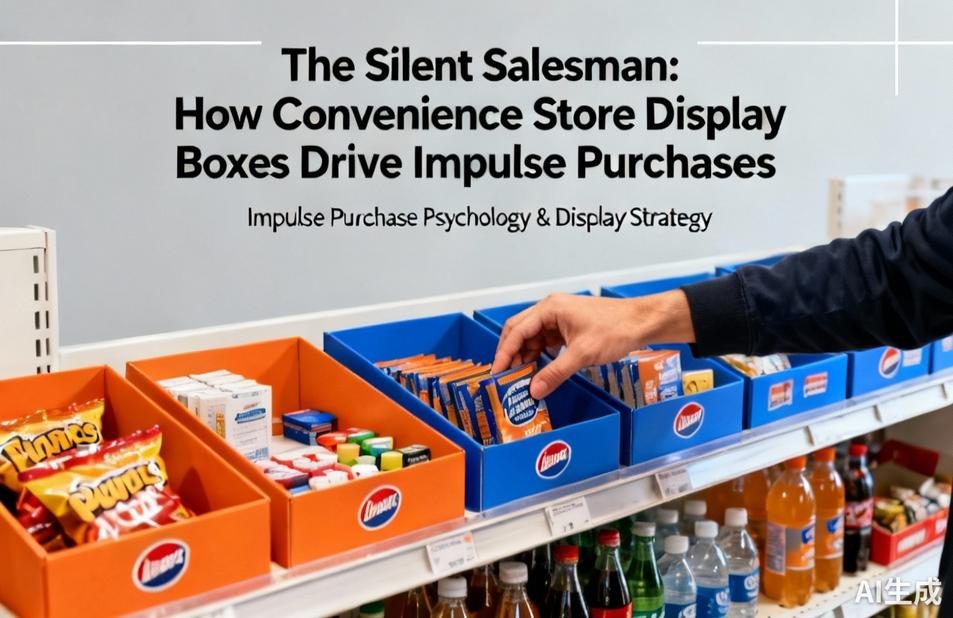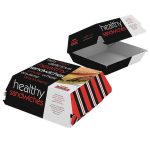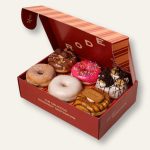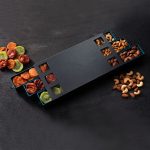
Walk into any convenience store around the world, and you’ll encounter an army of silent salesmen working tirelessly around the clock. These aren’t human employees but strategically placed convenience store display boxes that guide your shopping journey from the moment you enter. These unassuming cardboard warriors occupy the precious real estate between your quick decision and the store’s bottom line, transforming casual browsers into impulse buyers with psychological precision.
The science behind effective display box placement begins at the entrance, where brightly colored boxes create what retailers call the ‘decompression zone.’ This area allows customers to transition from the outside world while presenting high-margin items that don’t require lengthy consideration. Candy displays, chewing gum boxes, and single-serving snack containers positioned here capitalize on what marketers term the ‘waiting mentality’ – the brief moment when shoppers mentally prepare for their shopping experience.
Beyond initial placement, the design psychology of display boxes plays a crucial role in driving sales. Studies show that angular, red-colored boxes create a sense of urgency for limited-time offers, while curved, blue-themed designs work better for products requiring trust, like health supplements. The height of display boxes is equally strategic – products placed at 48-52 inches from the floor receive the most visual attention from adults, while lower placements around 30 inches target children’s eye levels during family visits.
Seasonal adaptability represents another superpower of modern display boxes. During summer months, transparent plastic display cases filled with sunscreen and sunglasses naturally draw attention near checkout counters. Come winter, the same space transforms into a hub for hand warmers and holiday-themed treats. This chameleon-like quality allows convenience stores to maintain fresh aesthetics without costly renovations, keeping regular customers engaged through predictable yet novel shopping experiences.
The economics of display box optimization reveal why retailers invest significantly in these solutions. A well-placed display box for energy drinks can increase sales by up to 300% compared to standard shelf placement, according to convenience retail associations. This dramatic boost comes from what behavioral economists call ‘choice architecture’ – designing environments that subconsciously guide decisions without restricting options. The display box doesn’t force purchases but makes certain items irresistibly convenient.
Technological integration has elevated display boxes from passive containers to interactive sales tools. Some modern units incorporate digital screens showing product videos, while others feature QR codes linking to promotional content. Temperature-controlled display boxes for premium chocolates or chilled beverages maintain product integrity while signaling quality through subtle condensation or specialized lighting. These technological enhancements create multisensory experiences that transcend traditional shopping.
Sustainability concerns have sparked innovation in display box materials, with many retailers shifting toward recycled cardboard and biodegradable plastics. Interestingly, eco-friendly displays often become selling points themselves, with studies showing consumers perceive products in sustainable packaging as higher quality. This creates a virtuous cycle where ethical business practices enhance rather than compromise commercial effectiveness.
The future of convenience store display boxes points toward hyper-personalization through data analytics. Imagine displays that adjust their product mix based on time of day, weather conditions, or even facial recognition of regular customers. While privacy concerns remain, the potential for serving customer needs more precisely represents the next frontier in retail merchandising.
Ultimately, the humble display box embodies the essence of convenience retailing – meeting immediate needs through intelligent design. These unsung heroes of retail psychology demonstrate that sometimes the most powerful marketing doesn’t shout for attention but quietly positions itself at the intersection of human behavior and commercial opportunity. The next time you reach for that strategically placed candy bar while waiting in line, remember – you’re participating in a carefully choreographed dance between merchant and consumer, with the display box as your graceful partner.




Leave a Message